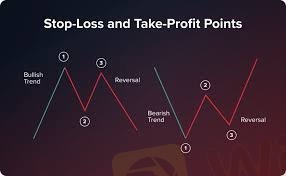
2024-12-24 00:46
IndustriaStop-loss vs reduced exposure: Managing Christmas
#reducingvsclosingpositionsaroundchrismasmichriches#
*Stop-Loss Strategy*
1. *Set a stop-loss level*: Determine a price level at which to automatically close a position if it moves against you.
2. *Limit potential losses*: Stop-loss orders can limit potential losses if the market moves against your position.
3. *Risk management*: Stop-loss orders can help manage risk by automatically closing positions that reach a certain loss threshold.
4. *Potential drawbacks*: Stop-loss orders can be triggered by market volatility, resulting in unnecessary closures.
*Reduced Exposure Strategy*
1. *Reduce position sizes*: Decrease the size of your positions to minimize potential losses.
2. *Diversify portfolios*: Spread investments across various asset classes to reduce reliance on individual assets.
3. *Lower risk*: Reducing exposure can lower potential losses if the market moves against your positions.
4. *Potential drawbacks*: Reducing exposure may also limit potential gains if the market moves in your favor.
*Key Differences*
1. *Risk management approach*: Stop-loss strategies focus on limiting losses through automatic closures, while reduced exposure strategies aim to minimize losses by reducing position sizes.
2. *Market volatility*: Stop-loss strategies can be triggered by market volatility, whereas reduced exposure strategies are less susceptible to market fluctuations.
3. *Potential gains*: Reduced exposure strategies may limit potential gains, whereas stop-loss strategies do not directly impact potential gains.
*Choosing the Right Strategy*
1. *Risk tolerance*: Consider your risk tolerance and adjust your strategy accordingly.
2. *Market analysis*: Evaluate market conditions and adjust your strategy based on potential market movements.
3. *Trading goals*: Align your strategy with your trading goals, whether prioritizing risk management or potential gains.
Ultimately, a combination of both stop-loss and reduced exposure strategies may be the most effective approach to managing Christmas trading risk.
Me gusta 0
FX1985175646
Trader
Contenido delicado
Industria
Trabajo de WikiFX
Industria
Trabajo a tiempo parcial
Industria
gana sin invertir solo por usar una app
Industria
Evento de subsidio en México
Industria
gana 100 dólares con un minimo de inversión de 4 dólares
Industria
Evento de subsidio de Colombia
Categoría del foro

Plataforma

Exposición

Agente

Contratación

EA

Industria

Mercado

Índice
Stop-loss vs reduced exposure: Managing Christmas
 Nigeria | 2024-12-24 00:46
Nigeria | 2024-12-24 00:46#reducingvsclosingpositionsaroundchrismasmichriches#
*Stop-Loss Strategy*
1. *Set a stop-loss level*: Determine a price level at which to automatically close a position if it moves against you.
2. *Limit potential losses*: Stop-loss orders can limit potential losses if the market moves against your position.
3. *Risk management*: Stop-loss orders can help manage risk by automatically closing positions that reach a certain loss threshold.
4. *Potential drawbacks*: Stop-loss orders can be triggered by market volatility, resulting in unnecessary closures.
*Reduced Exposure Strategy*
1. *Reduce position sizes*: Decrease the size of your positions to minimize potential losses.
2. *Diversify portfolios*: Spread investments across various asset classes to reduce reliance on individual assets.
3. *Lower risk*: Reducing exposure can lower potential losses if the market moves against your positions.
4. *Potential drawbacks*: Reducing exposure may also limit potential gains if the market moves in your favor.
*Key Differences*
1. *Risk management approach*: Stop-loss strategies focus on limiting losses through automatic closures, while reduced exposure strategies aim to minimize losses by reducing position sizes.
2. *Market volatility*: Stop-loss strategies can be triggered by market volatility, whereas reduced exposure strategies are less susceptible to market fluctuations.
3. *Potential gains*: Reduced exposure strategies may limit potential gains, whereas stop-loss strategies do not directly impact potential gains.
*Choosing the Right Strategy*
1. *Risk tolerance*: Consider your risk tolerance and adjust your strategy accordingly.
2. *Market analysis*: Evaluate market conditions and adjust your strategy based on potential market movements.
3. *Trading goals*: Align your strategy with your trading goals, whether prioritizing risk management or potential gains.
Ultimately, a combination of both stop-loss and reduced exposure strategies may be the most effective approach to managing Christmas trading risk.
Me gusta 0
Yo también quiero comentar.
Enviar
0Comentarios

No hay comentarios todavía. Haz el primero.

Enviar
No hay comentarios todavía. Haz el primero.